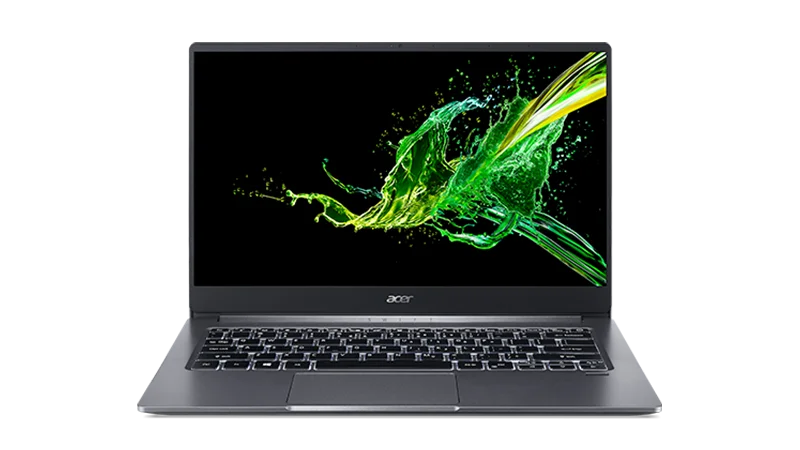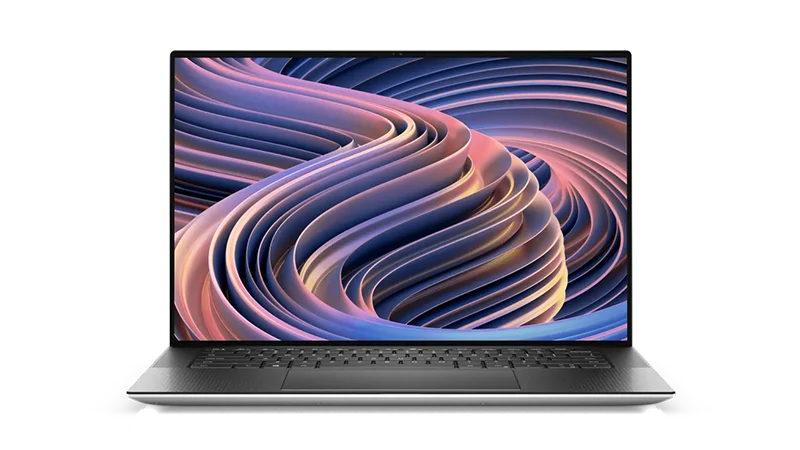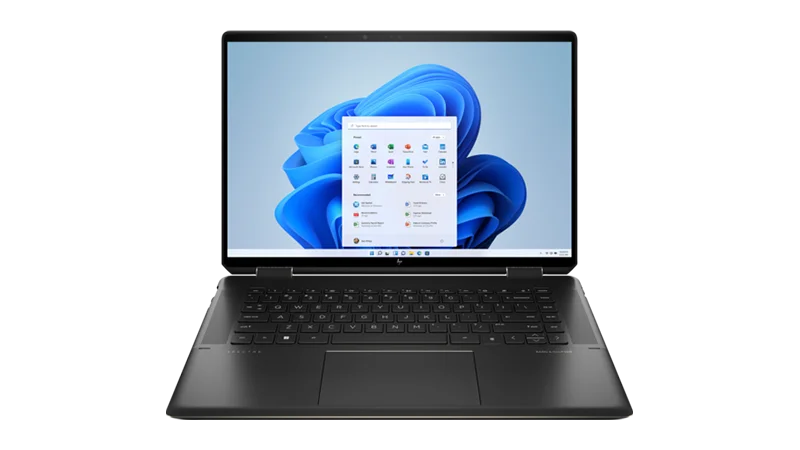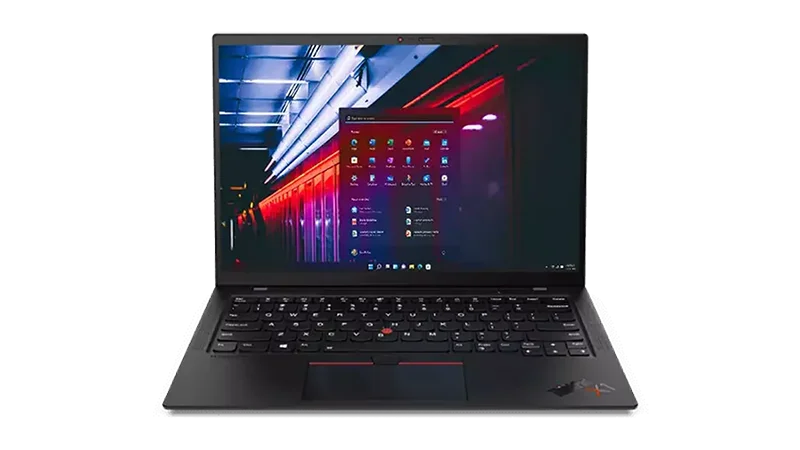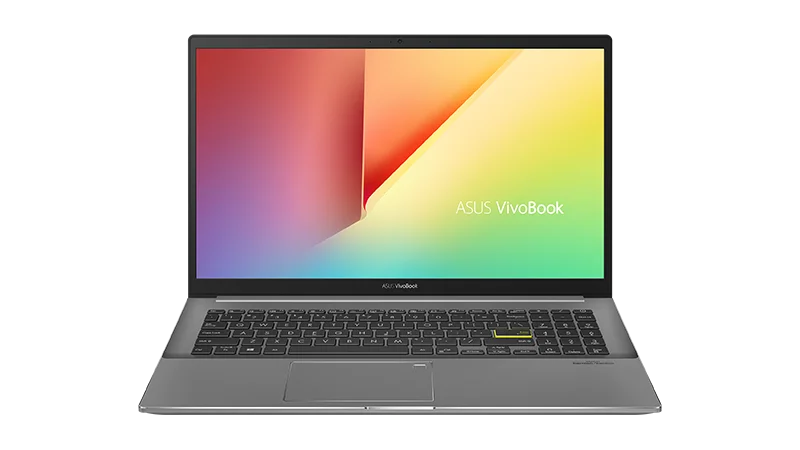Having the best laptop for students study can help you speed up the study sessions and group projects. Different courses you study, the different types of laptops needed. I will discuss the best laptop for students study in Malaysia and specify which laptop suits certain courses.
Top 10 laptops you can consider for your study use
1. Apple MacBook Pro 14-inch
- Specs: M3 chip, 16GB RAM, 512GB SSD, 14-inch Liquid Retina XDR display
- Colour: Space Gray or Silver
- Price: RM7,499
- Recommendation: Ideal for design and photography students, offering robust performance and an outstanding display for colour-sensitive tasks.
2. Asus Zenbook 14
- Specs: AMD Ryzen 5, 8GB RAM, 512GB SSD, 14-inch OLED display
- Colour: Pine Grey or Lilac Mist
- Price: RM3,999
- Recommendation: Portable with a decent display, it’s a value-for-money option for design and photography students on a budget.
3. Acer Swift 3
- Specs: 12th Gen Intel Core i7-1260P, 16GB RAM, 1TB SSD, 14-inch FHD IPS display
- Colour: Silver
- Price: RM4,699
- Recommendation: A budget-friendly option with ample performance for design tools and photo editing software.
4. MacBook Air
- Specs: M2 chip, 8GB RAM, 256GB SSD, 13.6-inch Liquid Retina display
- Colour: Silver, Space Gray, Starlight, Midnight
- Price: RM5,199
- Recommendation: Offering robust performance and an outstanding display for colour-sensitive tasks.
5. Dell XPS 15
- Specs: 13th Gen Intel Core i7-13700H, 16GB RAM, 512GB SSD, 15.6-inch 4K UHD+ display
- Colour: Platinum Silver with Black Carbon Fiber Palmrest
- Price: RM7,799.
- Recommendation: A high-resolution screen and powerful internals make it perfect for media students working with high-definition content.
6. HP Spectre x360
- Specs: 13th Gen Intel Core i7, 16GB RAM, 1TB SSD, 13.5-inch 4K OLED touch display
- Colour: Nightfall Black
- Price: RM7,199
- Recommendation: Its 4K touch display and convertible design are perfect for media students who value versatility and screen quality.
7. LG Gram 17
- Specs: 11th Gen Intel Core i7, 16GB RAM, 1TB SSD, 17-inch WQXGA (2560×1600) IPS LCD
- Colour: White, Silver, Black
- Price: RM5,299
- Recommendation: Its large, high-resolution screen and lightweight design are great for media-focused students who consume and create lots of content.
8. Lenovo ThinkPad X1 Carbon Gen 11
- Specs: 13th Gen Intel Core i5-1345U, 16GB RAM, 256GB SSD, 14-inch FHD display
- Colour: Black
- Price: RM5,911.
- Recommendation: Well-known for its durability and security features, suitable for business and finance students.
9. Microsoft Surface Laptop 5
- Specs: 12th Gen Intel Core i5, 8GB RAM, 256GB SSD, 13.5-inch PixelSense Touchscreen
- Colour: Platinum or Matte Black
- Price: RM4,999
- Recommendation: With a touch screen and sleek design, this laptop is ideal for business students who need a combination of portability and performance.
10. Asus VivoBook S15
- Specs: 11th Gen Intel Core i5, 8GB RAM, 512GB SSD, 15.6-inch FHD display
- Colour: Indie Black, Gaia Green, Resolute Red, Dreamy White
- Price: RM3,199
- Recommendation: The price is worth its performance and is suitable for business and finance students.
Which course do you study, and what types of laptops do you need?
Design / Photograph
There is a need for powerful performance laptops for students who study design or photography courses. Most assignments must be completed by AI tools, Photoshop, editing and various Adobe software, which the laptops need bigger RAM to support.
This software needs the laptop’s powerful performance and bigger RAM to get high-resolution images. The high resolution helps students improve on the details during the design or editing of the photos.
The bigger RAM makes it convenient for students to multitask with various software applications simultaneously. The smaller RAM may cause your laptop to lag when multitasking.
The gaming laptops for Lenovo, MSI, Asus and Macbook pack the necessary punch for design and photography students to slice through the most complex of tasks with ease.
Pros
- Powerful Performance: These laptops are designed to easily handle intense graphic requirements and multitask.
- Better Heat Dissipation: Gaming laptops have an advanced cooling system to handle heating problems during multitasking.
- Versatility: From 3D modelling to video rendering, these machines can handle almost anything you throw at them.
Cons
- Heavy: Gaming laptops are heavy and not ideal for students on the move.
- Battery: Gaming laptops must be charged to maintain their performance, which may reduce the battery life.
- Expensive: The powerful performance laptops come at expensive prices, not affordable by the public.
Media
Students often complete their assignments for those media courses by editing videos, creating podcasts, and working with various multimedia applications.
The assignments need laptops to have powerful performance, but heavy laptops are not practical because sometimes media students need to bring laptops to go anywhere, like attending press conferences and interviews.
The weight of laptops is the priority concern to allow students to be ever-ready and mobile. Some of the laptops are lightweights but have great performance for editing and multitasking.
Dell, HP, Asus, and Acer have developed lightweight laptops that perform well, according to my experience in testing different brands. Their lightweight laptops have lower prices and powerful performance, which is suitable for media students to handle the most criteria.
Pros
- Lightweight: The portability is an advantage for media students who are constantly on the move.
- Longer Battery Life: These laptops often offer extended battery life, ensuring I can work on long projects or remain active in the field without constantly searching for a power outlet.
Cons
- Performance Trade-offs: The performance of lightweight laptops is not comparable to gaming laptops but achieves portability.
- Thermal Management: The slim form means less room for advanced cooling systems, and it has potential overheating issues during intensive tasks.
Business/ Finance Study
There is no special requirement for laptops for business and finance students. Any type of laptop, especially lightweight laptops, is suitable for business and finance students.
The business and finance studies assignment is mostly related to sheets, databases, financial modelling, words, and PDFs. The general specs of laptops can be compliant with it.
Choosing lightweight laptops aims to be convenient for students hopping between lectures, group meetings, and internships. Therefore, lightweight and reliable laptops become the priority for business and finance students.
The brands Dell, HP, Asus, and Acer often hit the sweet spot between functionality and design. The general specs of laptops from these brands are moderately priced, so students can save their budget and own a laptop with portability and durability.
Pros
- Lightweight: Easy to carry, benefits for hopping between lectures, group meetings, and internships.
- Aesthetic Design: Offer aesthetic design to attract business students.
- Long Battery Life: Longer battery life that can last through back-to-back classes or lengthy sessions of market research without a charge.
- Affordability: The price is affordable to the public, unlike high-end or specialised laptops.
Cons
- Performance: Can handle general use but struggle with the demands of complex data analysis software or multitasking with multiple high-powered programs.
- Thermal Efficiency: General and lightweight laptops have less efficient heat dissipation, leading to the potential for thermal throttling if pushed too hard.
- Limited Features: The graphics cards or resolution screens are at a moderate level to keep costs down.
How do you choose the CPU model according to your course?
The CPU model is crucial to consider when buying a laptop for students, the different courses need different CPU models to support their needs. The right CPU model can increase student efficiency in study and assignments.
Intel Core i5/ AMD Ryzen 5 (R5)
These CPUs are the workhorses of the laptop world. They offer a solid balance between performance and power efficiency, ideal for students who need a reliable system for everyday tasks without overpaying for unnecessary power.
For general usage:
- Office Software
- Watching dramas
- Playing light games
- Performing simple photo editing tasks
Intel Core i7 / AMD Ryzen 7 (R7)
Stepping up to an i7 or R7 processor will give you that extra oomph needed for more demanding tasks. They easily handle data-heavy spreadsheets and databases, making them a great fit for students whose coursework requires a bit more computational grunt.
For students venturing into professional design realms:
- Photoshop (PS)
- Premiere Pro (PR)
- Video editing
- General laptop gaming
Intel Core i9 / AMD Ryzen 9 (R9)
At the apex of the CPU hierarchy sits the i9 and R9 – powerhouses designed for those who demand the highest performance. While they come at a premium, for those pushing the envelope in computing needs, an i9 or R9 could be considered an investment in their educational toolkit.
For highest performance:
- Serious gamers
- Cutting-edge software development
- 3D modelling
- Heavy video rendering
The other Laptop configuration you need to know
The CPU model is the priority in finding the best laptop for students, but you should know other laptop configurations because they are related to how the CPU model performs well. RAM, memory, screen size, and USB ports significantly affect the overall experience.
Ram & Memory
Normal use – 16GB + 512GB
RAM (Random Access Memory) is your laptop’s short-term memory, which it uses to handle active tasks and running applications. For normal usage, 16GB of RAM paired with 512GB of SSD storage generally provides a smooth and responsive experience. This configuration allows one to multitask efficiently without system slowdowns.
For normal usage:
- web browsing
- document editing
- other student-related tasks
Professional use – 32GB
For professional use, upgrading to 32GB of RAM can keep things running smoothly, even with multiple applications open simultaneously. This level of RAM ensures that everything from virtual machines to large video files can be handled with relative ease.
For professional use:
- complex software
- data-intensive tasks
Screen size (recommended 14/ 15 inch)
Regarding screen size, I’ve found that 14 or 15 inches hit the sweet spot for portability and usability. This size range offers enough screen real estate for comfortable viewing and multitasking without making the laptop too bulky to carry around campus.
USB port (the more, the better)
A laptop with multiple USB ports lets me connect peripherals such as a mouse, keyboard, external hard drive, and other USB-enabled devices simultaneously. It’s particularly helpful when I need to transfer data from different sources or when I’m setting up a presentation.
Conclusion
Different course students need different laptop specs, so the student should follow their needs to find the best laptops. It is not the most expensive or powerful performance but the best laptop for students.
Apple Macbook Pro is recommended for design and photography students, based on my experience. The Macbook Pro is expensive, but it has powerful performance in graphic design and photo editing software. The lifetime of the Macbook Pro is long. Also, students can keep it to their careers.
I will recommend Dell XPS 15 for media students. They need the laptops to be lightweight and enough to edit video and audio. Dell XPS 15 is lightweight, with a 4K display and Intel i7 processor to achieve performance and portability.
Lenovo Think Pad X1 Carbon Gen 11 suits business and finance students. It has enough performance for business and finance students, is lightweight and has a longer battery life. It will help students hop between lectures, group meetings, and internships.
FAQ
How much should I expect to spend on a good student laptop in Malaysia?
The best laptop for students for different courses ranges from RM3,000 to RM7,000.
Can I get by with a budget laptop for my studies in Malaysia?
Yes, ensure it has at least an i5 or Ryzen 5 CPU, 8GB RAM, and a 256GB SSD for the best experience.
Are gaming laptops good for all students?
The performance of gaming laptops is enough for students to handle editing, graphic design and office applications. The weight and price of gaming laptops might not meet all student’s requirements, especially for those who keep bringing the laptops somewhere else.



